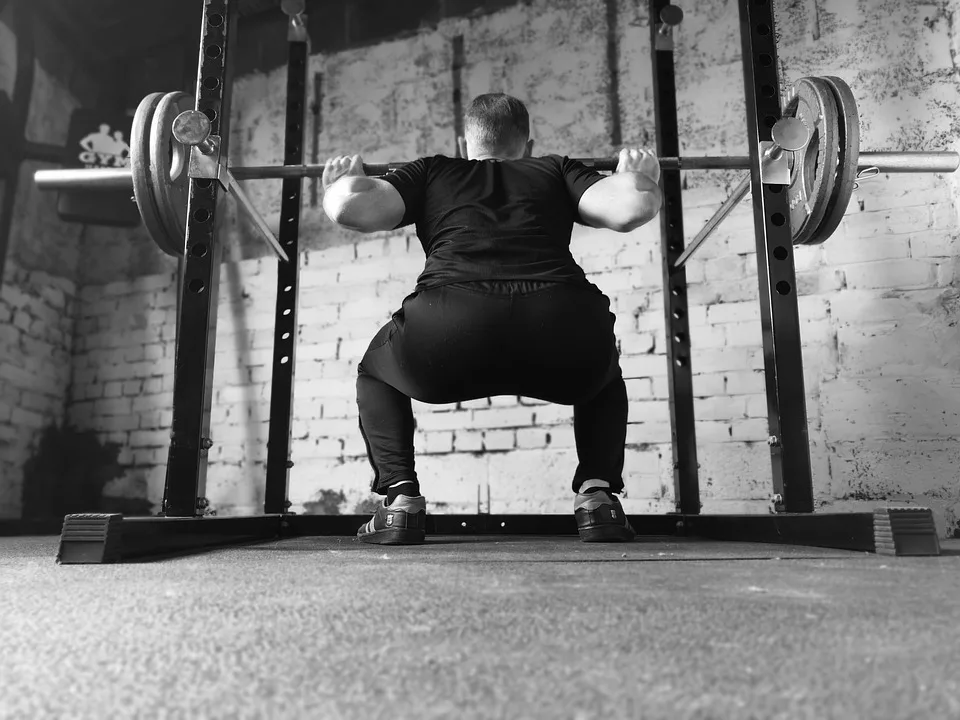Are you looking to take your lower body workouts to the next level? Look no further than the barbell squat. This compound exercise is a staple in any strength training routine and can help unlock your lower body potential like no other. In this full guide, we will dive into the benefits of barbell squats, proper form and technique, variations, and how to incorporate them into your workout routine.
When it comes to building lower body strength, barbell squats reign supreme. There are numerous benefits to incorporating this exercise into your routine:
Barbell squats target multiple muscle groups simultaneously, including the quadriceps, hamstrings, glutes, and calves. By engaging these muscles in a compound movement, you can stimulate muscle growth and increase overall lower body strength.
Barbell squats are a functional exercise, meaning they mimic movements we perform in our day-to-day lives. From standing up from a chair to lifting heavy objects off the ground, the strength gained from practicing squats can make these tasks easier and more efficient.
Weight-bearing exercises like barbell squats are essential for maintaining and increasing bone density. This is especially important as we age to prevent conditions such as osteoporosis. Regularly performing squats can help promote strong and healthy bones.
Studies have shown that compound exercises like barbell squats trigger the release of anabolic hormones such as testosterone and growth hormone. These hormones play a crucial role in muscle growth and repair, leading to faster progress in your lower body strength goals.
Barbell squats are known for being a demanding exercise that engages multiple muscle groups. This results in a higher calorie burn during and after the workout, making squats an effective addition to your routine for weight loss or body composition goals.
Proper squat form requires a strong core and stable lower body. By regularly performing squats, you can improve your posture and stability, reducing the risk of injuries and promoting overall body balance.
Before diving into barbell squats, it is essential to learn and practice proper form and technique. Here are the steps to perform a barbell squat correctly:
Start by placing the barbell on a rack at a height that aligns with your upper chest. Step underneath the barbell and position it across the posterior deltoids, with your hands gripping the bar wider than shoulder-width apart. Ensure your feet are shoulder-width apart, toes slightly turned out.
Brace your core by taking a deep breath and engage your glutes. Push your hips back and begin to lower your body by bending at the knees. Aim to squat down until your thighs are parallel to the ground or slightly below.
As you reach the bottom of the squat, drive through your heels and extend your knees and hips to stand up. Keep your chest up and maintain a neutral spine throughout the movement. Exhale as you reach the top of the squat.
To keep your lower body workouts challenging and prevent plateauing, it’s beneficial to incorporate different variations of the barbell squat. Here are some popular variations:
The front squat places the barbell across the front of your shoulders and engages the quadriceps and core to a greater extent. It challenges your positioning and requires a more upright torso compared to traditional squats.
The overhead squat involves the barbell held overhead with a wide grip. This variation targets the upper back, shoulders, and core, while also testing your mobility and stability.
The Bulgarian split squat is a unilateral exercise that requires one foot elevated behind you. This variation increases glute and hamstring activation, challenges stability, and helps correct muscle imbalances.
The sumo squat involves taking a wider stance with your toes pointed outward. This variation targets the inner thighs and glutes to a greater extent, providing a different stimulus to your lower body muscles.
The pistol squat is an advanced variation that requires single-leg strength and balance. It involves squatting down on one leg while the other leg extends in front of you. Start with a supported variation before attempting the full pistol squat.
Now that you know the benefits, proper form, and variations of barbell squats, it’s time to incorporate them into your workout routine. Here are some tips:
Before starting your squat session, warm up your lower body with dynamic stretches, such as leg swings or hip circles. This helps prepare your muscles and joints for the demands of squats.
If you’re a beginner or new to squats, start with bodyweight squats to perfect your form and build a foundation of strength. Once you feel comfortable and confident, gradually add weights.
To continue challenging your lower body, progressively increase the weight you lift over time. This can be through adding more plates to the barbell or using dumbbells or kettlebells for additional resistance.
To prevent boredom and constantly challenge your muscles, incorporate different squat variations into your routine. Rotate between front squats, overhead squats, and other variations to ensure well-rounded lower body development.
After an intense squat workout, prioritize recovery. Stretch your lower body muscles, foam roll if needed, and fuel your body with proper nutrition to aid in muscle repair and growth.
In conclusion, barbell squats are a powerful exercise that can unlock your lower body potential. From increased muscle mass and bone density to improved functional strength and calorie burn, squats offer numerous benefits. By mastering proper form, exploring variations, and incorporating them into your workout routine, you can take your lower body workouts to new heights. So, grab that barbell, brace your core, and get ready to unleash the power of the squat!
Barbell squats are not only a popular exercise in the gym but also a highly effective way to unlock your lower body potential. This full guide will provide you with all the necessary information to master this compound movement and take your lower body strength and muscle development to new heights. Whether you are a beginner or an experienced lifter, incorporating barbell squats into your routine can yield numerous benefits.
First and foremost, barbell squats target multiple muscle groups simultaneously, making them a highly efficient exercise. This compound movement primarily works the quadriceps, hamstrings, glutes, and calves. Additionally, barbell squats engage stabilizer muscles such as the core, lower back, and upper back, enhancing overall strength and stability in the lower body. With consistent and proper execution, you can expect significant gains in lower body strength, muscle size, and functional performance.
To maximize the benefits of barbell squats, proper form is crucial. This guide will cover all aspects of the exercise, from setting up the barbell and positioning your body to proper breathing techniques. It will also provide detailed instructions on progressing from bodyweight squats to adding weights gradually, ensuring safe and effective execution. With careful attention to form, you can minimize the risk of injury and build a solid foundation for continued progress. Whether your goal is to improve athletic performance or sculpt a strong lower body, unlocking your lower body potential starts with the barbell squat.


Leave a Reply